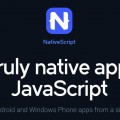JavaScript remains an essential programming language for software engineers, web developers, and tech companies worldwide. Although programming languages might seem interchangeable to many, each one—whether Python, C++, or Swift—requires a specialized skill set. JavaScript, however, holds a unique place in the technology ecosystem. According to a Web Technologies Survey, over 95% of websites rely on JavaScript, highlighting its fundamental role in front-end and back-end development.
What is JavaScript and Why Does It Matter?
JavaScript is a dynamic, versatile programming language enabling developers to create interactive, high-quality content for the web. Used by Fortune 500 companies, startups, and dedicated JavaScript development companies, it’s a core component of nearly every modern web application. It works across all major web browsers—Chrome, Firefox, Safari, and others—providing users with a smooth, immersive online experience.
Before JavaScript, websites were static, limited to text and basic images. JavaScript transformed this, introducing interactive elements like auto-complete text, slideshows, and animations. These dynamic features revolutionized web design by making websites more engaging and user-friendly.
JavaScript complements HTML and CSS, the other building blocks of the web. HTML defines a site’s structure, while CSS shapes its visual design—colors, fonts, and layout. JavaScript, however, animates these elements, handling tasks without requiring users to load new pages. For today’s high-expectation consumer, seamless, interactive websites are a must. As demand rises, hiring JavaScript-skilled developers has become a significant challenge in the competitive tech job market, driving companies to seek specialized JavaScript development services to fulfill their needs.
Essential JavaScript Tools for Developers
JavaScript’s ecosystem has expanded to include a diverse array of libraries, frameworks, and tools, providing developers with an unprecedented level of flexibility. Here’s a look at some of the most critical tools that JavaScript developers rely on for building responsive, interactive web applications.
—
1. Front-End Framework: React
React is a JavaScript library developed by Facebook engineer Jordan Walke to streamline the creation of user interface components. First launched in Facebook’s News Feed in 2011, it was later integrated into Instagram and eventually open-sourced in 2015. Today, React is maintained as part of the Facebook Open Source project and continues to be one of the most widely-used libraries for web and mobile applications.
React allows developers to build UIs by creating reusable components and managing state within a virtual DOM (Document Object Model). This virtual DOM optimizes performance, enabling faster, smoother updates. React’s declarative approach—where developers describe how the UI should look at any given time—simplifies the development process and saves valuable coding time. Additionally, experienced JavaScript developers can usually learn the basics of React within a day, thanks to its straightforward API and extensive documentation.
2. Language Flavor: ES6 (ECMAScript 6)
ECMAScript 6, commonly called ES6 or ES2015, represents a standardized upgrade to JavaScript that introduced essential features for cleaner, more efficient coding. Since its release, ES6 has been the go-to version for JavaScript development, providing a modern syntax and more tools to improve code readability, functionality, and performance.
Some of ES6’s most significant upgrades include:
- Arrow Functions: These offer a simpler, more concise syntax for writing functions, improving code readability and reducing boilerplate code.
- Classes and Inheritance: ES6 introduced `class` keywords, allowing developers to define classes without relying on prototypes.
- Modules: ES6 supports module imports and exports, enhancing code modularity and allowing for better organization in large applications.
- Promises: A feature that helps manage asynchronous operations, Promises simplify error handling, making code cleaner and more predictable.
To ensure cross-browser compatibility, developers can use Babel, a compiler that converts ES6 code to ES5, the previous JavaScript version, making applications compatible with older browsers.
3. Front-End Framework: Vue.js
Vue.js is a progressive framework that has gained popularity for its simplicity, flexibility, and ease of integration. Vue’s component-based model allows developers to build UIs by composing reusable components. It’s also more lightweight than other libraries and frameworks, making it an appealing choice for smaller applications and single-page applications (SPAs).
Vue’s reactive data binding feature automatically updates the DOM when the underlying data changes, providing a more intuitive and straightforward development experience. This framework is a favorite among developers who prioritize flexibility and ease of learning, as it offers similar functionality to React but with a gentler learning curve.
4. Task Runner: Gulp
Automating repetitive tasks like code minification, image compression, and file concatenation is essential for efficient JavaScript development. Task runners like Gulp play a critical role in reducing development time by managing these background tasks.
Gulp uses a code-centric approach, focusing on the code itself rather than on complex configuration files. It operates using Node.js streams, allowing it to process files faster than other task runners. Although it requires familiarity with Node.js APIs, once mastered, Gulp can significantly boost productivity, freeing up developers to focus on complex tasks rather than time-consuming maintenance work.
5. Node.js and NPM (Node Package Manager)
Node.js has expanded JavaScript beyond the browser, allowing developers to build server-side applications with the same language they use for front-end development. This unified language environment makes full-stack development more streamlined and efficient, as the same codebase can be used across server and client sides.
NPM, the Node Package Manager, serves as the default package manager for Node.js and provides access to over a million libraries and modules. This repository enables developers to quickly install and integrate third-party libraries, reducing development time and allowing for greater customization. Together, Node.js and NPM empower JavaScript developers to manage dependencies, scale applications, and run server-side applications with ease.
6. Testing Framework: Jest
Maintained by Facebook, Jest is a testing framework designed to ensure the reliability and functionality of JavaScript code. Jest’s zero-configuration approach and powerful mocking capabilities allow developers to create tests efficiently without spending excessive time on setup.
Jest supports snapshot testing, which enables developers to compare new versions of components to previous snapshots, making it easy to identify unexpected changes. Its compatibility with React makes Jest particularly popular for testing applications built with React, ensuring that UI components render correctly and that all functions perform as expected.
Looking Forward
JavaScript’s growth shows no signs of slowing down, with developers and businesses alike turning to the language for building complex, responsive web applications. Staying informed about new tools and updates within the JavaScript ecosystem is essential, especially as new libraries and frameworks are constantly introduced.
The tools discussed here—React, ES6, Vue.js, Gulp, Node.js, and Jest—are some of the most effective resources for creating robust, interactive applications. For managers and tech teams aiming to deliver quality applications, working with knowledgeable JavaScript developers and staying current on emerging tools will be critical. For companies facing the challenge of finding experienced JavaScript talent, partnering with specialized JavaScript development firms can ensure access to skilled developers who know how to leverage these tools to produce cutting-edge solutions.
JavaScript’s prominence in both web and mobile development is unparalleled, and it remains a core skill in today’s job market. From creating visually appealing UIs with React and Vue.js to streamlining task automation with Gulp, JavaScript developers have an array of tools at their disposal to meet the demands of modern digital experiences. For those aiming to create the next wave of interactive, user-friendly applications, mastery of these tools will be indispensable.








